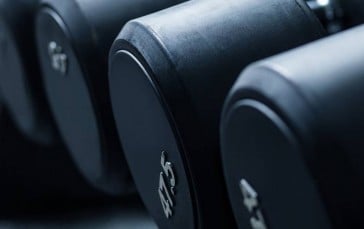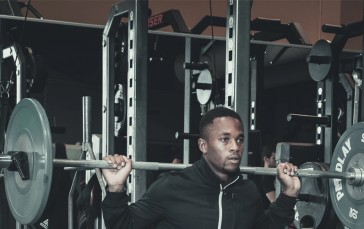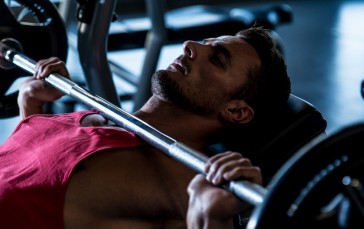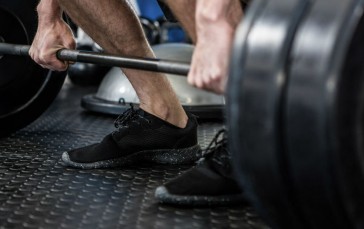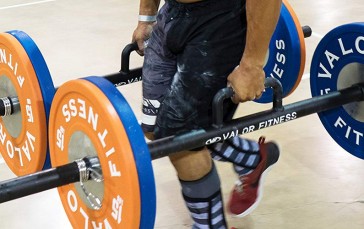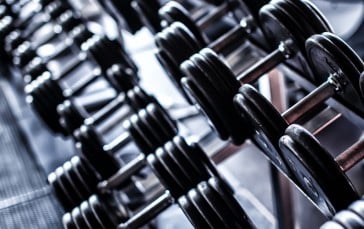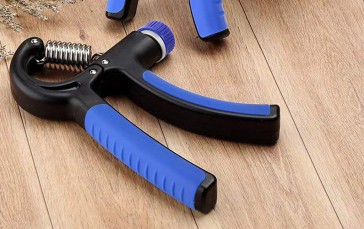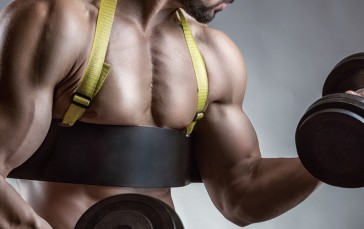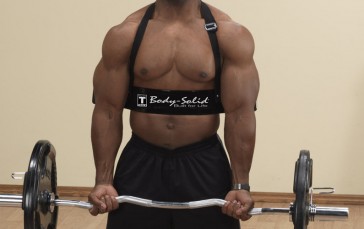Warming Up Weightlifting Tips
Warming up before an intense weightlifting session will not only increase your performance but it will also help to prevent injuries as you strain and push yourself to raise your limits and achieve your goals. When it comes to a pre-workout, cutting corners simply won’t cut it, especially if your aim is to improve your fitness level and work towards lifting heavier weights. If you’re a weightlifting fanatic then we understand that there’s an urge to walk into the gym and head straight for the weights, with the thought that you have quite possibly picked increased in strength overnight! Although this is a positive attitude to have, we do suggest that you practice restraint and indulge in a thorough warmup session before you whip out the big guns.
Why Warm Up?
Warming up before a workout is not only crucial to your health but it is also a way to increase your flexibility for the “main event”. So, before you jump the gun and tackle an Olympic weight bench, you might want to consider just how important it is to warm up and ease into strenuous training.
First and foremost, a proper warmup session will help to prevent injuries. This is because blood will be pumped to the areas that you’ll be concentrating on during your training and this, in turn, lowers the chance of muscle pulls or joint injuries, which not only hurt like crazy but can often take some time to recover if you recover at all! Injuries to your joints and muscles can set you back and while you recuperate, you are losing the muscle mass you have gained up until that point – this can make it very hard for you to get back into the game.
Secondly, a complete warmup session will add to your flexibility and the more flexible you are, the faster you will advance in your weightlift training. A good pre-workout session will also prepare your body for motion, a key component when it comes to lifting heavy sets. By adding a touch of cardio to your session, you’ll also have your adrenaline pumping, which comes in handy when you have a challenging task at hand.
Last but not least, by loosening your muscles and getting your blood pumping, you also improve your mental health, which also plays an extremely large role in professional training. A healthy mind is what sets the foundation for a healthy body that’s driven to reach its peak performance.
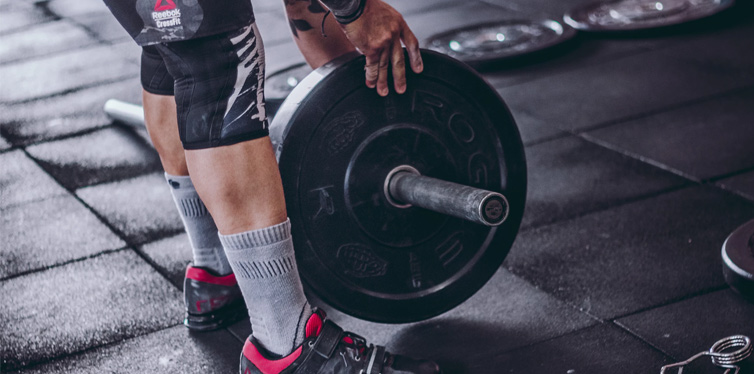
How To Warm Up
The first thing to note is that warming up and stretching are two very different things and the latter is not sufficient preparation on its own – a concept which many trainers have yet to realize. The purpose of warming up is to ease your body into the strenuous movements it’s about to do, so, while stretching is a good way to relax your muscles and increase flexibility, the correct movements are just as important, if not more. Training experts suggest that you include the following 4 steps into every warmup session:
1. Loosen up – Prep your body for exercise with mobility movements that loosen your muscles, lubricate your joints and relax your body as a whole. If possible, get your hands on a foam roller. These are nifty workout accessories that can be used to roll over your muscles making them sufficiently loose and superbly supple.
2. Get your heart pumping – No need to run a marathon, a short and quick pre-workout that will get your heart rate up and blood pumping to all the spots where it’s going to be needed is sufficient enough to prepare your body for the heavy lifting it’s about to do. Run on a treadmill, row briskly, or ride an assault bike on low resistance and you will feel better, more revved up, and ready to don those weightlifting shoes.
3. Do some subtle and dynamic stretches – While stretches are a great way to keep your muscles healthy, it’s important to not overdo it. Stretch, but do not hold the position – static stretching can hinder one’s performance. Instead, do dynamic stretching. This requires you to continuously move through a range of motions, for example, you can make big arm circles in both directions, do a few butt kicks, or even just touch your toes and then reach for the sky. The aim is to not hold a position but to keep moving whilst stretching.
4. Practice – We mentioned above that a warmup should include a routine where you prepare your body for the strenuous movements it’s about to embark upon. One way you can do this is to practice or replicate your weightlifting routine by mimicking the movements you would make but on a lighter scale. If you intend on tackling the squat rack, then do a set of weight-free squats, if you have bench presses in your routine, do a few push-ups or hold the plank position for a few seconds. These subtle movements of the more challenging workout you have ahead of you will not only get your muscles into the swing of things, but you will also be more mentally prepared for what’s to come.
How Much Time Should Be Put Into Warming Up?
Now that you have a good idea of what an appropriate warm-up for weightlifting entails, you are probably wondering how much of a warmup is good enough. Most professional trainers agree that when it specifically comes to weight training, a thorough warmup session should proceed for 10 minutes at the very least. Essentially, you want to do at least 2 minutes of loosening up, 5 minutes of cardio, 2 minutes of stretching and 5 minutes of movement practices. These times might vary depending on the pace you are moving at (there’s no rush) – they do, however, give a good indication of what is expected from a weight-trainers pre-workout.
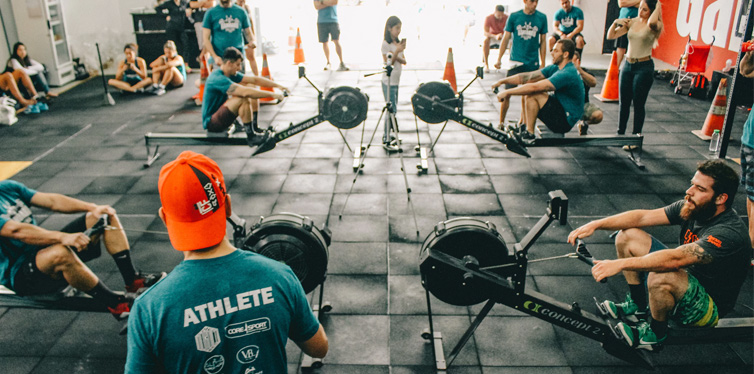
Suggested Weightlifting Warmup Techniques
There’s definitely no shortfall of ideas for warmup routines and you can change things up a bit during each pre-workout session – this will ensure that your warmups are never a drag, making you more likely to follow through with them before jumping to the main event. If you have come to the end of your ropes and need some inspiration that pulls you away from the usual, perhaps the following list of our recommended warmup sets will enlighten you:
How to loosen muscles: We previously mentioned foam rollers as being one of the best ways to really loosen muscles and make them suppler and more flexible for the training at hand. Foam rollers can be found in most gyms or you can purchase one from your nearest sports and training outlet. These nifty cylindrical items are popular for their myofascial release – a massage technique that helps to release muscle tension. Foam rolling both before and after a workout can help prevent muscle fatigue and reduce the chances of body cramps.
- To loosen your calf muscles, simply place the foam roller beneath your calves, with your legs straight. Lift your body up using your arms and then gently roll along the back of your legs, up and down from your knees to your ankles. Move the foam roller further up to loosen hamstrings or turn around to give your quads a good massage using the same rolling technique.
- If your back is one of your focus points, which it usually is, then place the foam roller under your back and use your arms to roll the foam roller from the bottom of your back to the top, and then back down again.
- Similar rolling techniques can be administrated for your arms, shoulders, thighs, and butt. Simply place the foam roller under the focus area and – roll!
Cardio warmup suggestions: Many weight trainers take cardio for granted since their focus is to increase fitness levels through weightlifting. To reduce the risk of heart failure and to ensure that you have enough blood pumping around the muscles that are going to be put to the test, it’s very important that a light cardio workout is included in your weightlifting warmup session. These light cardio sessions can include:
- A brisk 5-minute run
- Gentle rowing
- A 5-minute cycle on an easy setting
- A few laps in the pool
- A round of jump rope
Stretching technique ideas: When it comes to stretching, professional weightlifting trainers prefer to suggest dynamic stretching over the static alternative. This means that you would keep a flow of movement whilst stretching, instead of holding a stretched position for a certain amount of time. Dynamic stretching is recommended because it primes the body for action and increases central nervous system activity. Examples of dynamic stretching actions include:
- Bodyweight lunges
- Trunk rotations
- Leg swings
- Arm circles
- Butt kicks

Movement practices: Movement practices essentially mimic the movements you are about to make while lifting your weights. The movements should focus on using the same muscles but with less strain and tension. One way to briskly replicate these movements is to remove the weights from your adjustable dumbbells and use only the light-weighted bar to do bicep curls, overhead extensions, bench presses, and so on. Other movement practices can include the likes of:
- A set of bodyweight squats
- Hip rotations
- Push-ups
- Spiderman steps
- Lunges
- Hip extensions
- Forward and side leg swings
- Elevated push-ups or wall push-ups
- Shoulder rotations
What About Cooling Down?
Just like it is extremely important to begin a training session with a thorough warmup routine, spending time cooling down after a workout is essential in healing one’s body and keeping muscles happy. A cool-down gives the body the opportunity to smoothly transition from strenuous activity back to a steady and more placid state of rest.
The main purpose and benefits of a sufficient cool-down session is to lower heart and breathing rates, gradually reduce body temperatures, return muscles to their optimal states, to help avoid the venous pooling of blood in the lower extremities, and to restore physiologic systems. To summarise, cooling down after weightlifting allows the body to restore itself to its general state at a smooth and steady pace, so as to prevent muscles and joints from spasming or going into shock.
What will happen if you do not cool down after exercise?
Vigorous workouts cause the blood vessels in your legs to expand – this means that more blood will flow to one’s legs and feet. If your workout comes to an abrupt halt and you fail to spend time cooling down and easing your body into its natural state, then you could be susceptible to a scenario where your heart rate slows suddenly, causing blood to pool in your lower body. This could lead to dizziness and even fainting.
What are examples of cooling down techniques?
The following are a few examples of basic cool-down methods:
- A slow and brisk walk (use the treadmill if you’re in a gym)
- Bend to touch your toes, or lift your leg up behind you
- Stretch your arms over your head, or place a hand around your back
- Do a few body lunges
- Breathe! The best way to relax is to focus on your breathing and bring your body to a calm state
What else can be done after a strenuous workout to repair and relax muscles?
Once you have completed your workout, warm-up and cool-down included, then we suggest you hit the steam room followed by a warm shower. The hot steam and warm water will relax your body and sooth torn and tired muscles. Professional weightlifters also strongly recommend that you ingest a good amount of protein shortly after a workout – this protein can come in the form of a protein-rich meal, a protein bar or protein powder added to a shake. This amino-rich food source helps to repair and restore stretched and torn muscles while preventing the onset of cramps and injuries that could keep you from training during the days to come.
Sources
- How long should you warm up for? – Verywell


